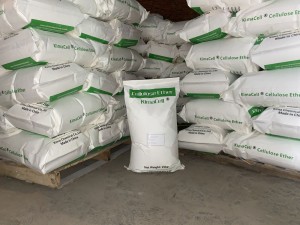Natural Polymer Hydroxypropyl Methylcellulose For Cement Based Plaster
Natural Polymer Hydroxypropyl Methylcellulose For Cement Based Plaster
Hydroxypropyl methylcellulose (HPMC) is a natural polymer that has been widely used in the construction industry as a cement-based plaster additive. It can be used as a water retention agent, thickener, and binder to improve the performance of cement-based plasters.
HPMC is a semi-synthetic, water-soluble polymer made from cellulose. It is derived from natural cellulose through a chemical modification process that involves the addition of hydroxypropyl and methyl groups. This modification results in a polymer with improved water solubility, thermal stability, and chemical resistance.
The use of HPMC in cement-based plaster formulations provides numerous benefits such as:
- Improved Workability: HPMC acts as a rheology modifier that improves the workability and application properties of the plaster. It enhances the adhesion, cohesion, and spreading of the plaster, allowing it to be easily applied to the substrate.
- Enhanced Water Retention: HPMC can absorb and retain large amounts of water, which helps to prevent the plaster from drying out too quickly. This property also ensures that the plaster maintains its consistency and workability for longer periods, even in hot and dry conditions.
- Increased Cohesion and Adhesion: HPMC forms a film around the cement particles, which enhances their cohesion and adhesion to the substrate. This property ensures that the plaster remains intact and does not crack or separate from the substrate.
- Reduced Cracking: HPMC improves the tensile strength and flexibility of the plaster, reducing the likelihood of cracking due to shrinkage or expansion.
- Improved Durability: HPMC provides the plaster with improved water resistance and chemical resistance, making it more durable and resistant to weathering and aging.
In addition to these benefits, HPMC is also a sustainable and environmentally friendly additive that can help reduce the environmental impact of cement-based plasters. It is non-toxic, biodegradable, and does not release harmful substances into the environment.
To use HPMC in cement-based plasters, it is typically added to the dry mix of cement and sand before the addition of water. The recommended dosage of HPMC varies depending on the specific application and the desired properties of the plaster. Generally, a dosage of 0.2% to 0.5% of HPMC based on the total weight of cement and sand is recommended.
HPMC is a versatile and effective additive that can significantly improve the performance of cement-based plasters. Its natural origin, sustainability, and eco-friendliness make it an attractive option for contractors, architects, and building owners who prioritize sustainable building practices.
